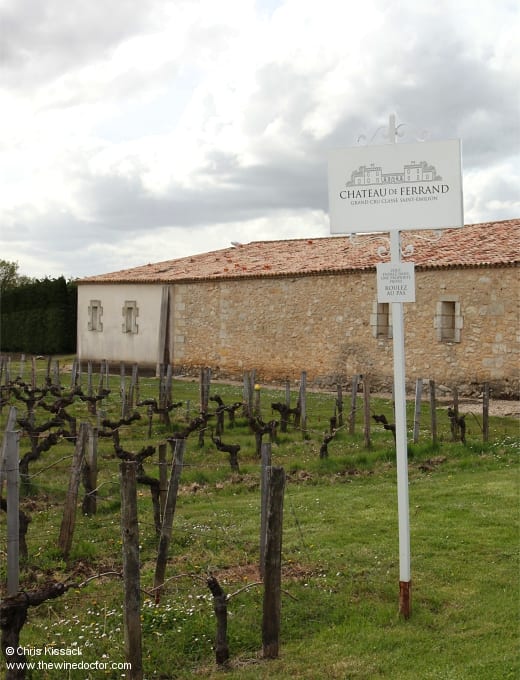Château de Ferrand
I remember the first time I chanced upon Château de Ferrand. Following my nose through the vineyards to the east of St Emilion, I turned up by Château Lassègue and followed a narrow road up to the côtes, taking me up onto the plateau above. This is one of a number of the roads which will transport you from the vineyards of the valley floor to the more prestigious plantings of the plateau; many of these easily-overlooked routes make the climb within one of the numerous small valleys which slice into the slope like scars, making the ascent a little more gentle.
This road was different though; suddenly the vineyards disappeared and I was driving through dense woodland. The road, which slalomed back and forth up the slope like a Alpine mountain pass, was strewn with the leafy detritus of autumn. After taking the fourth corner the route eventually started to straighten out a little, even while it continued to climb, and before long I had emerged once more into the bright October sunshine. All around me, the plateau was planted with the vines of Château de Ferrand. The attractive château sits at the roadside, a little further on, just past the Église Saint-Hippolyte, in a prime position which affords fabulous views across the valley of the Dordogne.
Origins
This view was perhaps what prompted the noble proprietors to build this château. The domaine may well have even more ancient origins – the 21st century proprietors suggest its origins lie in the 14th century – but the first hard evidence relating to its existence dates to the 17th century. The landowners at this time were the noble Bétoulaud family, the key figure being Gabriel de Bétoulaud (1616 – 1650), a conseiller in the Bordeaux parliament. He was the son of Marie de Bétoulaud née Bouquey, Dame de Saint-Poly, who had married Gabriel de Bétoulaud.
On February 24th 1636 this younger Gabriel married Jeanne de Forquier and they had two sons, named Élie de Bétoulaud (1638 – 1709) and yet another Gabriel de Bétoulaud (Gabriel was the name to have in this family, it seems). Elie is of particular significance to the story of the estate as it was he who had the château built in 1702, the design reputedly inspired by that of Le Grand Trianon, an imposing edifice within the royal estate of Versailles commissioned by Louis XIV (1638 – 1715) and built by his architect Jules Hardouin-Mansart in 1687. The building at Ferrand was graced with a large park and its position up on the plateau also permitted the excavation of handsome cellars, dug deep into the limestone rock. Élie was also responsible for the excavation of the Grottes de Ferrand, an expansive underground gallery of embellished, decorated and furnished chambers. Essentially an underground folly, their upkeep was not ensured after Élie’s passing, and today they lie abandoned.

